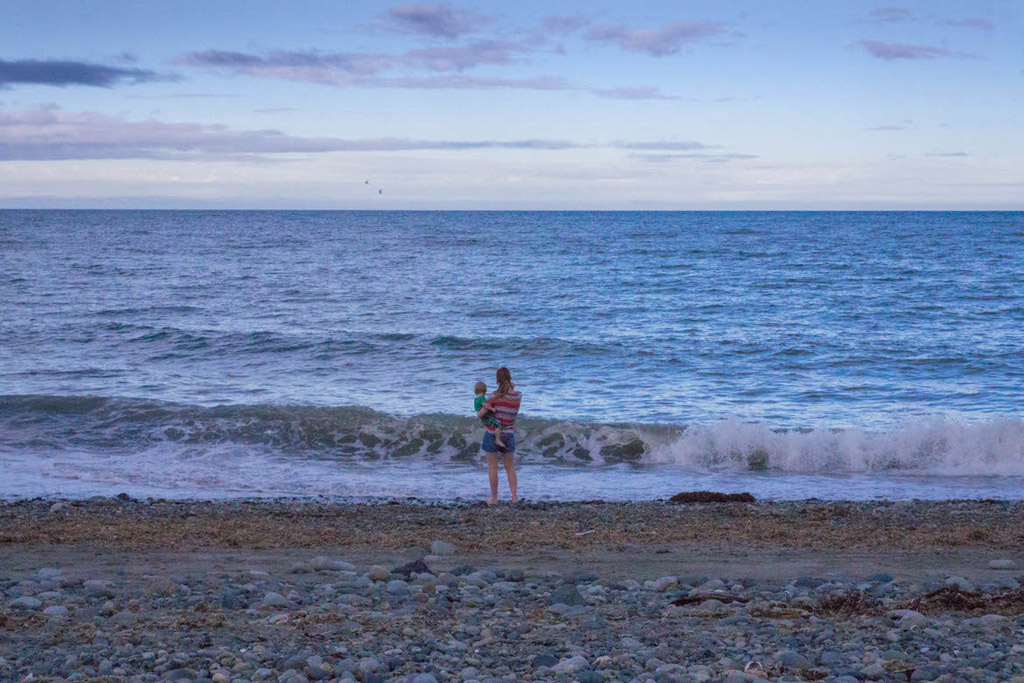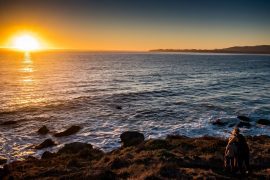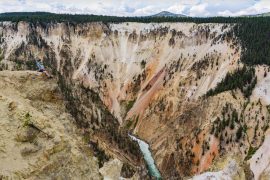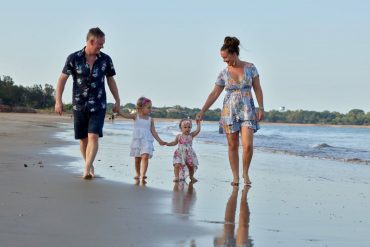
Evidence suggests that the Haida have lived on the islands since the end of the last ice age. Prior to European contact, the considerable Haida population was spread over dozens of villages. Outbreaks of smallpox and tuberculosis following the arrival of Europeans reduced the population to approximately 6-700, all of whom congregated in two villages that still exist today and are home to the majority of the remaining Haida: Skidegate and Old Masset. The Haida Heritage Centre in Skidegate houses artefacts and artwork, and is well worth a visit. There are six totem poles located at the centre, and you are welcomed into the carving house where artists work on others as well as canoes. Totem poles traditionally tell a story or illustrate a family crest, and are raised outside homes in order to identify who lives there, at significant locations, or for particular celebrations. They typically depict a mixture of animals and mythical creatures. Take the time to stop in the many art galleries and studios to appreciate the unique Haida style and learn more about their culture, but don’t expect to be taking any artwork home with you unless your budget stretches VERY far. The Heritage Centre is also committed to preserving the Haida language, which is unlike any other in the world, Haida traditions, such as the potlatch, a gift-giving feast and opportunity to discuss important community business and celebrate social occasions, and is the location of many cultural celebrations.
Gwaii Haanas is a ‘must’. Jointly run by Parks Canada and the Council of the Haida Nation, it is the only park in the world that offers protection from ‘mountaintop to seafloor’. Unless you have your own boat, kayak or seaplane, you will have to approach one of the tour operators to organise your trip. The zodiac boat trips can be choppy, windy and wet and can take a number of hours, depending where in the park you want to visit, so may not be the best option for younger travellers. For this reason, we opted for a seaplane, which we shared with three others, thus bringing the cost down (it actually worked out cheaper than a boat!). Theo sat up front with the pilot and loved it! Gwaii Haanas contains approximately 500 identified Haida heritage sites and is abundant in flora and fauna. There are no established trails, but you are free to walk within the park as long as you remain respectful of the cultural significance of the area, as well as the delicate ecosystem. The most popular sites to visit are popular for good reason and, with a limit of 12 people at a site at any one time, everyone is able to experience the wilderness of Gwaii Haanas without feeling crowded by other tourists. The totem poles and longhouses in Nang Sdins Llnagaay (Ninstins) on SGang Gwaay (Anthony Island) are a UNESCO World Heritage Site. The remains of other villages can also be seen at K’uuna Llnagaay (Skedans), T’aanuu Llnagaay (Tanu), Gandll K’in Gwaay.yaay (Hotspring Island) and Hlk’yah GawGa (Windy Bay). Windy Bay celebrates old with new and is the location of the 13-meter legacy pole raised in 2013 to celebrate the 20 years of joint management of Gwaii Haanas. Theo had a wonderful time splashing in the hotsprings on Hotspring Island, while we enjoyed a relaxing soak with a beautiful view of the surrounding islands.
The purple and blue mist enveloping the hills, the carpet of moss that creeps up the trees, the tales of mythical creatures and the life of the forest; magical Haida Gwaii is where the fairies of your childhood stories live.
Joss is an eco family travel blogger and photographer. Find tips and suggestions for environmentally-friendly family travel, as well as more destination recommendations, on her blog, and follow her on Facebook and Instagram. Original, extended article available at www.littlegreenglobetrotter.com.






Beautiful article. Thanks